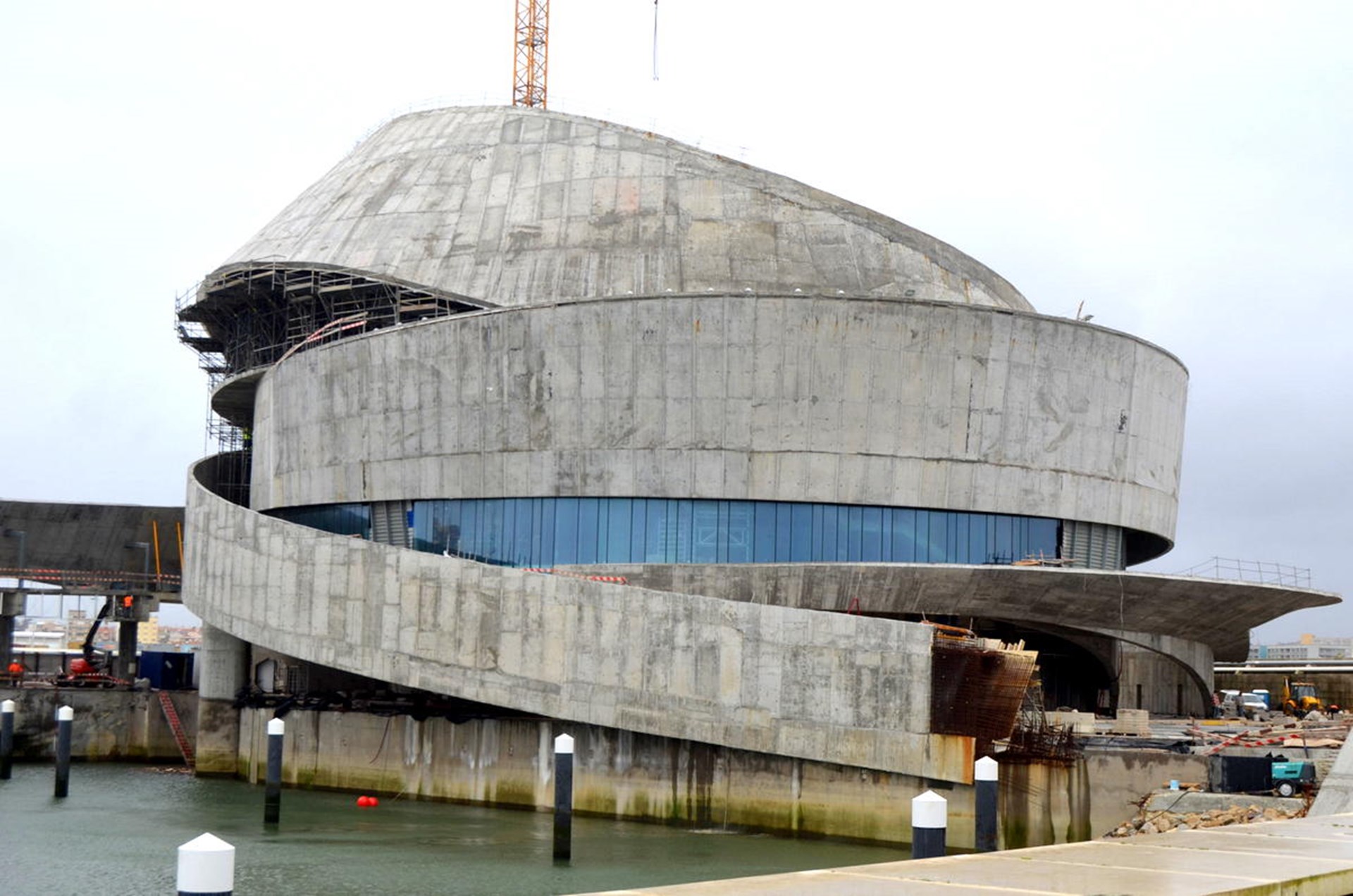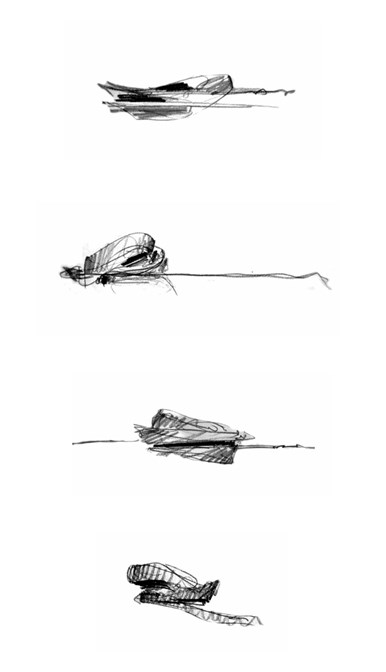Projeto
The Porto Cruise Terminal was designed by architect Luís Pedro Silva and is part of a strategic plan for the port area in which it is located, serving as a hub between the three main functions of this plan, which include the new dock for cruise ships, a new port for recreational boats, and a new access axis to the city of Matosinhos.
The project, influenced by the curved lines of the breakwater, stemmed from the idea of addressing all program needs with a single stroke, resulting in a spiral clad in thousands of hexagonal tiles, extending into three exterior tentacles and a fourth descending into its interior, in a helical ramp connecting all internal functions with a quadruple-height space dominated by natural light. The exterior arms lead the researchers' floors to the sea and the boarding floor to the cruise gangway or to the high-level promenade towards Matosinhos beach. Undulating and illuminated white, the volume is crowned by an accessible terrace overlooking the Atlantic Ocean.
The work was divided into phases, with the initial two phases completed, including a new dock and the main building. The final phase includes the water mirror in the core of the building, the connection road to the city, and the marina with the treatment of its fronts and the small nautical support building.




